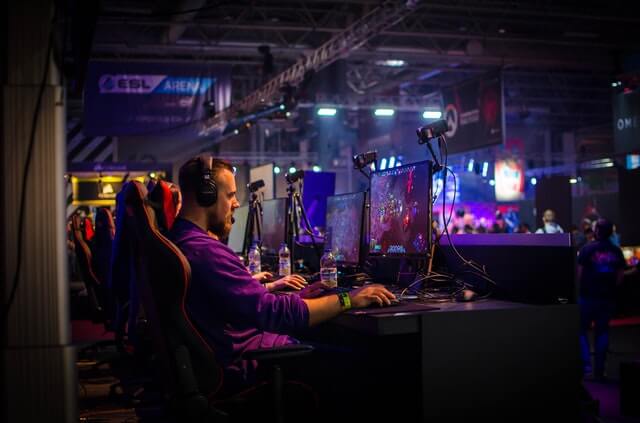Computerized Maintenance Management Systems (CMMS) are transforming how organizations manage assets, maintenance operations, and regulatory compliance. However, while CMMS software is often viewed through a technical or operational lens, its successful implementation and adoption rely heavily on one crucial factor: people. And that’s where Human Resources (HR) plays a pivotal role.
In this article, we explore the multifaceted role HR plays in the successful rollout and sustainability of a CMMS platform, from change management and communication to training, performance measurement, and organizational alignment.
Table of Contents
- Introduction to CMMS and Why People Matter
- Why HR’s Role in CMMS Implementation is Often Overlooked
- Key Responsibilities of HR During CMMS Implementation
- Change Management
- Communication Strategy
- Training and Development
- Role Definition and Organizational Structure
- Policy Alignment
- How HR Supports Post-Implementation Success
- Performance Metrics and Accountability
- Feedback Loops and Continuous Improvement
- Culture Building
- Case Study: HR-Driven CMMS Success
- Challenges HR Might Face in CMMS Projects
- Best Practices for HR in CMMS Implementation
- Final Thoughts
1. Introduction to CMMS and Why People Matter
A Computerized Maintenance Management System (CMMS) is designed to streamline maintenance tasks such as asset tracking, work order management, inventory control, preventive maintenance, and compliance reporting. While the technology is powerful, its effectiveness hinges on how well it’s adopted and utilized by the workforce.
People are the bridge between digital tools and business outcomes. Without their buy-in, no system—no matter how robust—can deliver lasting impact. That’s why HR’s strategic involvement is essential.
2. Why HR’s Role in CMMS Implementation Is Often Overlooked
When organizations plan a CMMS (Computerized Maintenance Management System) implementation, the focus typically falls heavily on technical and operational factors—such as selecting the right software, integrating it with existing systems, and setting up the right workflows. As a result, the human element often becomes an afterthought, and HR’s role is either minimized or completely overlooked.
There are several reasons why this happens:
1. Perception That CMMS Is Purely a Technical or Maintenance Project
CMMS platforms are often seen as tools exclusively for maintenance, engineering, or IT teams. Because the software revolves around asset tracking, maintenance schedules, and work orders, decision-makers tend to think of it as a system upgrade rather than an organizational change initiative. This mindset sidelines HR, even though a CMMS deeply impacts daily workflows, roles, and workplace culture.
2. Lack of Early Cross-Departmental Collaboration
In many companies, technology projects are launched within departmental silos. Maintenance leadership or IT teams may select a CMMS and plan the implementation without involving HR early on. By the time workforce challenges (like training needs, change resistance, or role shifts) arise, HR is called in reactively instead of proactively participating in strategic planning.
3. Underestimation of the Human Impact
Organizations often underestimate how deeply a CMMS alters job responsibilities, communication flows, performance expectations, and even employee mindsets. Workers accustomed to informal maintenance tracking methods may resist formalized digital processes unless properly engaged. Without HR’s involvement to manage the people-side of change, these risks are frequently overlooked.
4. Misalignment Between Technology and Talent Strategies
Many companies prioritize technology acquisition over talent development during digital initiatives. Budgets and resources are heavily allocated toward purchasing and customizing the CMMS itself, while far less attention is given to the training, skills development, and culture change needed for successful adoption—areas where HR would naturally lead if involved.
5. Unclear Ownership of Change Management
Because CMMS implementations are technology-driven, there’s often confusion about who owns change management. IT or maintenance leaders may assume training is a simple task handled by vendors, not realizing that lasting behavior change requires a structured, strategic approach—something HR specializes in but isn’t asked to lead unless their role is clearly defined upfront.
3. Key Responsibilities of HR During CMMS Implementation
A. Change Management
Resistance to change is one of the biggest barriers in any software implementation. HR can lead structured change management efforts using frameworks like ADKAR or Kotter’s 8-Step Process. Their role includes:
- Identifying key stakeholders and change agents
- Understanding employee concerns and addressing resistance
- Mapping a change readiness assessment
- Reinforcing the change with reward and recognition programs
B. Communication Strategy
A CMMS implementation often requires a cultural shift in how maintenance teams operate. HR can help craft clear, consistent messaging to build awareness and reduce uncertainty. This includes:
- Announcing the CMMS project with executive support
- Explaining the “why” behind the system and how it will benefit employees
- Creating two-way communication channels for feedback
- Coordinating town halls, emails, FAQs, and visual guides
C. Training and Development
No CMMS implementation is complete without robust training. HR ensures that training programs are inclusive, effective, and continuous. Their responsibilities may involve:
- Conducting skills gap assessments
- Designing and scheduling role-specific training
- Leveraging LMS platforms for continuous learning
- Collaborating with vendors on custom training resources
D. Role Definition and Organizational Structure
HR helps redefine roles and responsibilities to align with new workflows introduced by CMMS software. They also support:
- Updating job descriptions
- Defining access and permission levels
- Identifying new skill requirements for CMMS-related roles
E. Policy Alignment
With new systems come new protocols. HR ensures that company policies are revised accordingly and that compliance is documented. For example:
- Updating SOPs (Standard Operating Procedures)
- Creating policies for data entry standards
- Establishing accountability protocols for CMMS usage
4. How HR Supports Post-Implementation Success
A. Performance Metrics and Accountability
Once the CMMS is live, HR can assist in tracking performance metrics at both the individual and team levels. This could include:
- Time to close work orders
- Compliance with preventive maintenance schedules
- Adoption rates and login frequency
- Accuracy of data entry
HR can align these metrics with performance reviews and incentive programs to drive accountability.
B. Feedback Loops and Continuous Improvement
HR facilitates a culture of continuous improvement by enabling regular feedback. This could involve:
- Conducting employee satisfaction surveys regarding the CMMS
- Holding feedback sessions and pulse checks
- Channeling insights back to system administrators and IT teams for improvements
C. Culture Building
Long-term CMMS success requires a shift in culture—from reactive to proactive maintenance. HR plays a central role in:
- Reinforcing a data-driven mindset
- Celebrating success stories and improvements
- Encouraging collaboration between departments
5. Case Study: HR-Driven CMMS Success
Company: A mid-sized food processing company
Challenge: Low adoption rate of newly implemented CMMS
HR Involvement:
- Conducted a survey to identify user resistance points
- Designed a peer-led training program
- Implemented reward system for top CMMS users
- Aligned new CMMS KPIs with performance appraisal metrics
Outcome:
- User adoption increased by 60% within 3 months
- Work order backlog reduced by 35%
- Data accuracy improved, enabling better preventive maintenance scheduling
6. Challenges HR Might Face in CMMS Projects
While HR can be a powerful catalyst for CMMS implementation success, their involvement is not without challenges. Several obstacles can limit HR’s effectiveness or delay their impact unless they are anticipated and proactively addressed.
1. Lack of Technical Knowledge
CMMS platforms are often highly specialized, dealing with asset hierarchies, maintenance logs, inventory controls, and regulatory compliance. HR professionals, unless trained, may lack the technical background needed to fully grasp how the system changes workflows or operational requirements. Without adequate understanding, it can be difficult to design relevant training programs, update job descriptions, or communicate changes effectively.
Solution: Early onboarding sessions for HR about CMMS features, workflows, and user impacts can bridge the knowledge gap.
2. Resistance from Operational or IT Teams
In some organizations, maintenance or IT teams may see HR’s involvement as unnecessary or intrusive, especially if these teams view CMMS implementation as a purely technical initiative. This resistance can limit HR’s ability to shape training, change management, and adoption strategies.
Solution: Clearly define and communicate HR’s value early in the project. Emphasize how HR complements—not replaces—technical planning by addressing the people side of change.
3. Competing Priorities and Limited Resources
HR departments often juggle multiple organizational priorities at once, from recruitment and compliance to employee engagement and performance management. CMMS projects can add to their workload without additional resources or staffing, risking shallow involvement or rushed execution.
Solution: Allocate dedicated HR liaisons or project champions specifically for the CMMS initiative to ensure focused attention.
4. Short Implementation Timelines
Many CMMS projects are under pressure to launch quickly due to business needs, regulatory deadlines, or leadership expectations. Compressed timelines can leave little room for comprehensive change management, thorough skills assessments, or phased training rollouts—all areas HR typically manages carefully.
Solution: Advocate for a parallel track where technical deployment and workforce readiness move together, allowing HR processes to align with project milestones.
5. Difficulty Measuring Success Early
HR’s contributions—such as cultural change, improved user adoption, or skills development—can take time to materialize. Unlike technical metrics (e.g., system uptime, ticket closure rates), people-related outcomes are harder to quantify in the early stages of implementation, leading to undervaluation of HR’s impact.
Solution: Define leading indicators of success early (e.g., training participation rates, feedback scores, early adoption rates) alongside long-term outcome metrics.
Best Practices for HR in CMMS Implementation
- Be Involved Early: HR should be part of initial planning meetings and vendor evaluations.
- Build Cross-Functional Teams: Include HR, IT, operations, and maintenance in the implementation task force.
- Create a Change Champion Network: Identify frontline employees to act as peer influencers.
- Offer Blended Learning Models: Mix e-learning, hands-on sessions, and job aids for training.
- Track and Adjust: Use data to monitor adoption and adjust strategies as needed.
- Recognize and Reward: Publicly acknowledge employees and teams who successfully adapt to the new system.
Final Thoughts
A CMMS implementation isn’t just a tech project—it’s a people project. HR’s involvement can make or break its success. From laying the groundwork with change management to nurturing long-term adoption through training and culture-building, HR is an essential partner in any digital transformation effort.
By integrating HR into the CMMS implementation lifecycle from day one, organizations can significantly boost user adoption, reduce resistance, and unlock the full value of their maintenance technology investment.
Need help aligning your HR strategy with tech initiatives? Consider bringing in change management consultants or partnering with your CMMS vendor’s training experts to support a smooth rollout.











